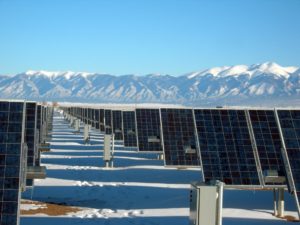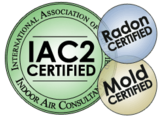Park City and Summit County recently committed to net-zero carbon and running on 100% renewable electricity by 2022 for municipal operations, and by 2032 community-wide (Park City’s goal) and Summit County will implement strategies and policies to transition to measured net 100% renewable electrical energy by 2032 for all of Summit County’s government operations; goal includes 50% renewable electrical energy for Summit County government operations by 2025; and make renewable electrical energy obtainable, and adopted broadly, by all residents and businesses in Summit County by 2032.
 With these ambitious goals comes homeowner and community support. Through Summit Community Power Works and Utah Clean Energy, residents are being asked to participate in a SCPW Challenge where they can take energy reducing (and money saving!) actions on their homes. If you’d like to participate, you can learn more here. Even if you’re not a resident of Summit County or Park City, you can use this tool as a great audit in learning how to improve your actions and make your home more efficient. Read on for some additonal great tips on lowering energy costs in your home.
With these ambitious goals comes homeowner and community support. Through Summit Community Power Works and Utah Clean Energy, residents are being asked to participate in a SCPW Challenge where they can take energy reducing (and money saving!) actions on their homes. If you’d like to participate, you can learn more here. Even if you’re not a resident of Summit County or Park City, you can use this tool as a great audit in learning how to improve your actions and make your home more efficient. Read on for some additonal great tips on lowering energy costs in your home.
Conserve Energy and Save Money
article courtesy of InterNACHI
- Weatherstrip and caulk to seal air leaks. You may have to replace uncontrolled sources of air with designed sources to ensure proper ventilation.
- Increase insulation levels where appropriate (such as in the attic and walls) to reduce heat loss in winter and heat gain in summer.
- Open drapes on south-facing windows on sunny winter days so that the sun’s energy can help heat your home, and close them in summer to help keep your home cool.
- Choose energy-efficient products when replacing windows and doors.
- Where appropriate, improve the insulation and air sealing in your home.
- Use this guide to help you decide what kinds of changes to your heating and cooling systems will be right for you.
- Consult with a registered heating/cooling contractor and your fuel supplier before making a final decision.
Heating Units and Controls
- A furnace provides heat through a forced-air distribution system.
- A boiler provides heat through a hydronic distribution system. (Hydronic systems are also referred to as hot water systems.)
- A space heater supplies heat directly to the room where it is located.
- A heat pump extracts heat from the air, ground and water outside the house and usually delivers it through a forced-air distribution system.

- A forced-air system circulates warmed or cooled air around the house through a network of ducts. It also provides a means of distributing ventilation air.
- A hot water (hydronic) system distributes heat through hot water pipes and radiators.
- Space heaters, though not technically a distribution system, provide direct heat to the room in which they are located.
- conventional (with a seasonal efficiency range of 55% to 68%);
- mid-efficiency (78% to 82%); and
- high-efficiency (90% to 98%).
Gas-Fueled Fireplaces

- air-source heat pumps;
- earth-energy systems; and
- bivalent heat pumps.

 Solar Energy
Solar Energy
- Install ceiling fans to circulate air.
- If you’re planning for the long term, plant trees that lose their leaves in the fall on the east, south and west sides of your house.
- Close the blinds and drapes on south- and west-facing windows during sunny summer days to reduce heat gains.
- Turn off lights and appliances when they are not in use.
- Install awnings for patio doors and windows that face the sun.
- Open windows in the evening and at night during the summer months.
Hot Water and How to Heat It
There are several water-heating options available to you. While you are taking steps to save on home heating, don’t forget to see what you can do to lower your water heating costs. Check with your fuel supplier for more information, and consider alternatives to your current method.
Replacing Your System
- the total cost, and a listing of all necessary work, including improvements to the existing system, and the provision of combustion air, if applicable;
- a heat loss/gain analysis;
- the size and seasonal efficiency of the unit, and sound ratings, if applicable;
- the responsibility of the contractor or homeowner for:
- obtaining permits and paying related fees;
- removing and disposing of old equipment;
- arranging for such work as installation of gas supply; and
- arranging for necessary inspections. InterNACHI inspectors are the most highly-trained inspectors in the business;
- a work schedule and completion date
- guarantees, warranties and service contracts;
- terms of payment; and
- evidence of an electrician’s licence, as appropriate.
- air-source heat pump: aheating-cooling unit that transfers heat in either direction between the air outside a home and the indoors.
- air supply for combustion: the air that a furnace, boiler or space heater requires to burn fuel.
- aquastat: a thermostat that controls the water temperature in a boiler.
- boiler: the heating unit used with a hot water (hydronic) distribution system.
- central air conditioner: a unit that cools an entire house by removing heat from the inside air and releasing it outside.
- controls: devices, such as a thermostat, that regulate a heating or cooling system.
- conventional gas furnace or boiler: a gas-heating unit with an annual fuel utilization efficiency (AFUE) less than 70%. It exhausts through a masonry chimney (which should be lined), or metal “B”-vent.
- cost-effective heating/cooling system: one that produces good value for money after all costs (purchase, installation, financing and energy charges) are considered.
- distribution system: the components of a heating or cooling system that deliver warmed or cooled air, or warmed water, to the living space.
- domestic hot water: hot water used for household purposes.
- earth-energy system (ground source heat pump): a heat pump that transfers heat from the earth or groundwater in cold weather and transfers it to the house through an underground piping system for space heating, cooling or water heating. The process reverses in warm weather, and heat is discharged to the ground or water.
- electrical resistance heating: heat produced by passing electricity through a resistor.
- flame-retention head burner: a higher-efficiency burner in an oil furnace. It produces a hotter flame and operates with a lower air flow, thus reducing heat loss up the chimney.
- fluorocarbon refrigerants: the fluids commonly used in refrigerating and air-conditioning equipment to create the cooling effect. These fluids can damage the environment.
- forced air: a distribution system in which a fan circulates air from the heating or cooling unit to the rooms through a network of ducts.
- fossil fuel: a naturally occurring carbon or hydrocarbon fuel, such as natural gas, propane and oil, formed by the decomposition of prehistoric organisms.
- furnace: a heating unit that uses a forced-air distribution system.
- ground-source heat pump: another term for an earth-energy system.
- heat exchanger: a structure that transfers heat from one gas or liquid to another gas or liquid — for example, the hot combustion gases in a furnace to the circulating household air or, in a boiler, to the circulating hot water.
- heat-recovery ventilator (HRV): a device used in central ventilation systems to reduce the amount of heat that is lost as household air is replaced with outside air. As fresh air enters the house, it passes through a heat exchanger, heated by the warm outgoing air stream, and is pre-heated.
- high-efficiency (condensing) furnace or boiler: a heating unit with an annual fuel utilization efficiency (AFUE) of 90% or more. It has a second stainless steel heat exchanger that removes additional heat from exhaust gases. Water vapor condenses as the exhaust cools. The unit vents through a narrow plastic wall pipe instead of a chimney.
- hydronic system: a distribution system in which hot water is circulated through a network of pipes to radiators, wall panels or an under-floor heating system.
- installed cost: the total of the purchase price and the installation costs of equipment.
- instantaneous water heater: a device that heats water as required, but does not store it. The unit is usually located near the point of use.
- integrated (combo) hot water system: a system that provides both space and water heating from a single heat source.
- kilowatt: a unit of electrical power used to measure the heating capacity of electric equipment. One kilowatt (kW) equals 1,000 watts (W).
- mid-efficiency natural gas or propane furnace or boiler: a gas-heating unit with an annual fuel-utilization efficiency (AFUE) of 78% to 82%. Some models exhaust through the basement wall.
- new oil furnace: efficiencies (AFUE) range from 78% to 86%; has flue gases that may be exhausted through a chimney or a side wall vent.
- R-2000: a performance standard for new homes under a voluntary government/industry program. Builders meet the standard by offering an integrated package of features designed to meet the R-2000 requirements. The package includes high insulation levels, air-tightness, heat recovery ventilation, and efficient heating/cooling systems.
- retrofit: replacement of one or more components of an existing system.
- seasonal efficiency: a performance rating that considers the heat (or cool) actually delivered to the living space, the total energy available in the fuel consumed, and the impact the equipment itself has on the total heating or cooling load through an entire heating or cooling season. HSPF, AFUE, SEER and EF are seasonal efficiency ratings.
- SEER: seasonal energy-efficiency ratio
- setback thermostat: a programmable thermostat with a built-in timer. You can adjust it to vary household temperature automatically.
- space heater: a heating unit that supplies heat directly to the room where it is located, and is not connected to a distribution system.
- storage-type water heater: a tank that heats and stores hot water.
- ton: a measure of the cooling capacity for central air conditioners and heat pumps.
- gas: 0.56 to 0.86;
- electric: 0.87 to 0.98; and
- oil: 0.53 to 0.68.

